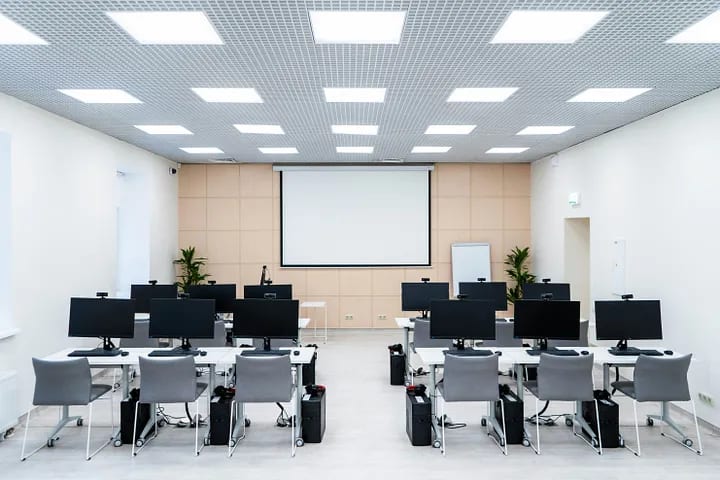Why Digital Literacy Needs To Become A Core Part Of Education Like Math And English
Why Gen Z is struggling with tech in the workplace

Stories about Generation Z the generation now entering the work market and technology are not new. Stories about them being obsessed with technology go back over a decade. They use technology daily, so they must be good at using it, right?
What Is The Problem?
The term “Digital Native” is often used to describe young people who have grown up surrounded by technology. This led to an assumption from many that all young people are good with technology. The truth is, as many employers are finding out and complaining about; when it comes to technology in the workplace many are struggling.
They may be “Digital Natives” but the majority of their time is spent on video games, social media, and messaging applications. What do all of these have in common? They are all very user-friendly by design and switching platforms from say Tik Tok to Instagram or YouTube shorts is easy because they all have a similar user interface.

Smartphones in general are very user-friendly and increasingly so and more and more organisations have an app or at least a mobile-friendly website. With 60% and rising of all web traffic coming from mobile devices, this trend is unlikely to change any time soon.
So Why Aren't Workplaces Becoming More User-friendly Too?
They are. But unlike social media websites where use cases are all rather similar corporate software is often bespoke. This means moving to a company that uses different software or taking on a new responsibility that requires the use of different features can be a steep learning curve. Even commonly used software like MS Excel is used very differently in different organizations.
For example at my school we use Bromcom to take attendance, store student data, store and access timetables, and more. It’s a good package and I am mostly happy with the parts of it that I use. A quick Google search for alternatives found me 13 options, all of which offer more or less the same features, and some that I know are used in schools around the country and I have personally used before did not even come up on the first page of Google.

This exists in all industries. Before teaching, I have worked in call centers and in retail. Every one of these companies had different software packages to learn even as a shop assistant. Carphone Warehouse had both a modern Windows mouse and keyboard and MS DOS-style software that required navigation using the function keys at least 8 years ago.
This is difficult to change because each business is different and has different requirements for its software.
Why Are Schools Not Preparing Students To Use All Of This Different Software
They can’t. You cannot possibly prepare students for every software package they may encounter. And that is just considering the software on the market no, we have no idea what may be announced tomorrow, in the next year, or in the next decade.
Add to this that Computing is a shortage subject in the UK where we are already suffering an overall teacher subject. Last year the government only meant 35% of its recruitment target for Computing teachers so this problem is not getting better. And this is happening in other countries too with reportedly only 40% of California high schools offering Computer Science classes.
This all means that Computing education is difficult to provide and digital literacy is becoming worse. Children starting high school in the UK are increasingly unable to perform basic IT tasks such as using a mouse and keyboard, creating folders, using e-mail, and even accessing websites. The prevalence of touch devices and everything being done via apps means they rarely use general-purpose computing.
Even browsers are mainly used when they are automatically opened by clicking a link in an app, and that is only when the app doesn't just load a built-in browser. I sometimes ask students what website they got an image or a quote from and they reply Google. They have been taught about search engines, browsers, and websites.
But each of those things was 1 of 25+ lessons in one week of one year of high school. At the end of the lesson and even at the end of the term this knowledge was fairly secure but by the next year it is mostly forgotten and there is no time to cover it again.

Just because we taught it does not mean students know it, especially weeks, months, and years later.
So What Is The Solution?
All teachers are teachers of literacy. I hear this message so often, and as a Computer Science teacher, I agree literacy is important. If we want the next generation and the ones that follow to be true “Digital Natives” who are tech literate and can adapt to new software we need another message alongside this.
All teachers are teachers of digital literacy. Now firstly I know this is not easy. Many schools don't have the equipment to include digital literacy in every lesson. But there is in my opinion no quick fix. We are not suddenly going to find more Computing teachers or find more time in the curriculum to add in more Computing lessons even if we did.
Where possible though technology should be used in lessons. It is used everywhere in business, I challenge you to think of any popular career path that does not use technology.

With exam boards in England confirming that they are moving to on-screen assessment, basic IT skills such as typing accessing bespoke software, and saving files in the correct place with the correct naming convention are going to become something we need in every subject.
So this is my plea to all teachers of all subjects. If you have an opportunity to use technology to enhance your lesson, seize it. And look for these opportunities when you can, don't wait for them to come to you. If we are preparing children for the real world when they leave us, our classrooms need to evolve, the world certainly has.
About the Creator
Michael Naylor
I am a Computer Science teacher in the UK with a variety of interests from education, making learning more accessible and self improvement to tech, gaming, and programming.






Comments
There are no comments for this story
Be the first to respond and start the conversation.